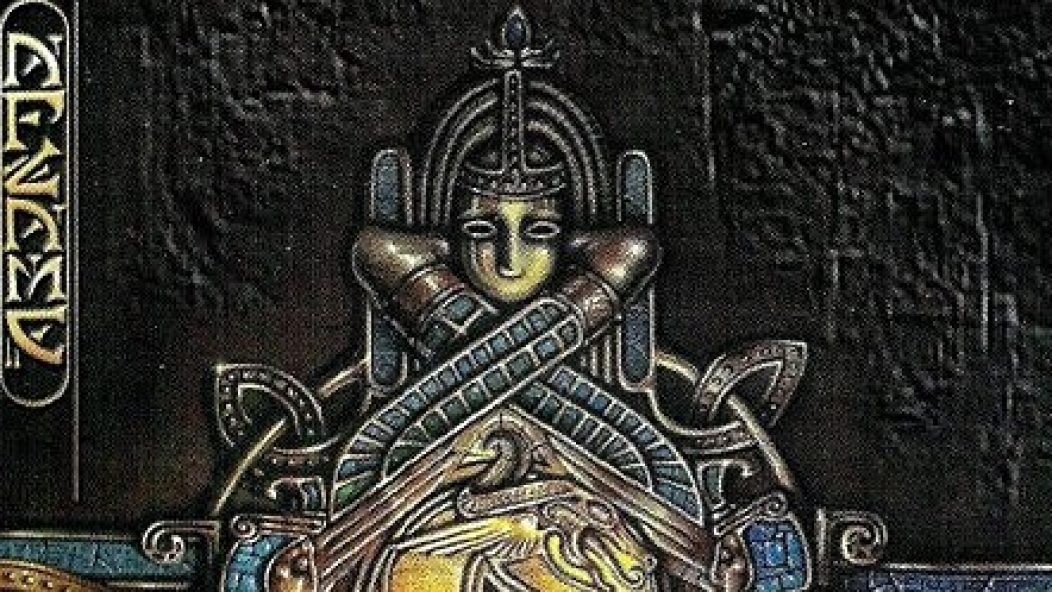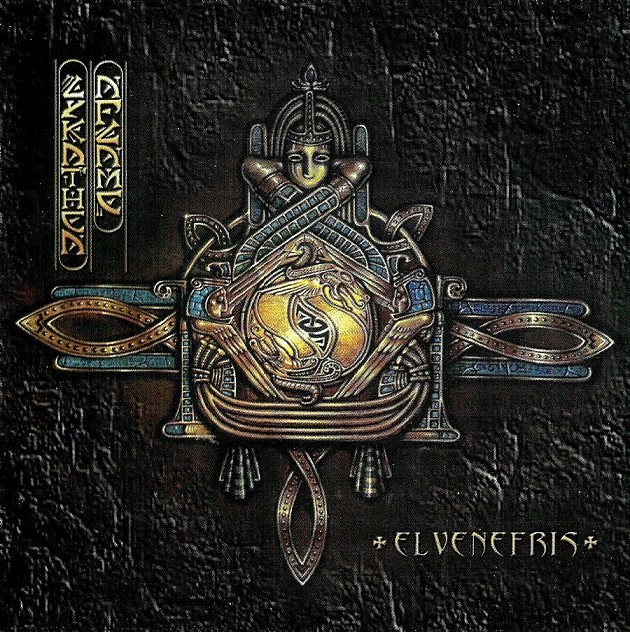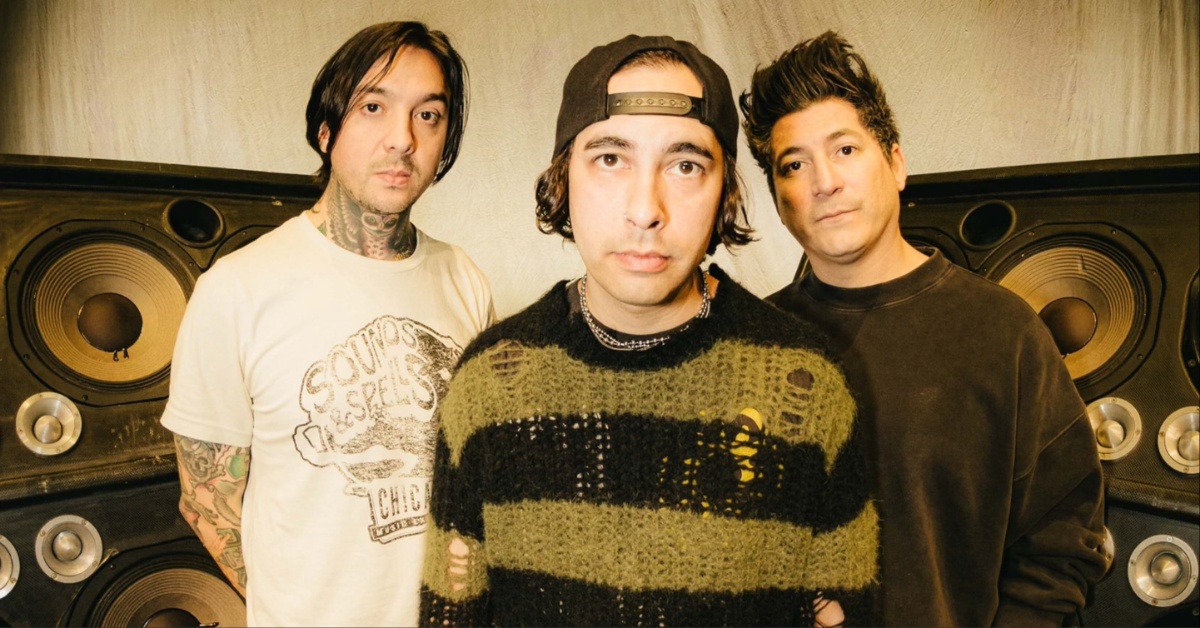
Freedom, Fury, and Fire: A Look at Drummer Tom Coroner's Career

. . .
. . .
Cult of Fire, a black metal beast from the Czech Republic, feels Czech. This is no small feat. After all, the globalization of metal via the Internet has eradicated many regional kinks and quirks. These days, bands belong more to their respective genres. Cult of Fire, though, seem to hold on strong to the freedom and fury of their forebears.
Behind their barnstorming blasts sits a collage approach to composition which traces its linage to a late-’90s/early-’00s scene that bewildered adventurous mail-order metalheads with a different path for extreme styles. And the Cult of Fire roots of the family tree go deeper than just topsoil timbres. Their trunk is drummer Tom Coroner, a fill-happy snare flayer who has cut a path through the scene’s premier avant-blargers. By scrolling down his résumé, one receives an impromptu shopping list of the finer outsider albums of the era. You may not realize it, but you’re only a few clicks away from achieving what took former CD acquisition experts hundreds of dollars, checked-daily Obscene Productions bookmarks, deep distro connections, and forests of xeroxed zines. Technology has evened the score. You, however, want to catch up, and Tom Coroner’s CV is the place to start.
As young drummers tend to do, Tom Coroner, then Tomáš Corn, cut his teeth with two established groups. Krleš snatched up the teenage Corn to sew up the pocket on their 1996 demo StÌn predtÌm. The outfit, a speedier Warlock derivative, is heavy metal’s version of a tadpole in a city puddle, churning out the kind of noise that will forever endure wherever there’s a smidgen of standing water. Twenty-three years later, they’re still swimming along.
But, soon after StÌn predtÌm, Corn jumped to bigger things with another regiment of relative vets, Garbage Disposal. Filling in on their lone LP, 1997’s Union Carbide, Corn was freed to display his dexterity with his sticks and soles. At the time, Garbage Disposal were members of a burgeoning brutal death metal cadre, coming off like a distilled NYDM stalwart. Still, you could hear guitarist Franta Šerák and bassist Mirek Lehky working against formula, broadening the dynamic/tonal palette with an oddly clean low end. Granted, this sonic experiment is slight. However, as a jumping off point for Czech death’s upcoming big bang, Union Carbide fits snugly into the narrative: There was something different going on here and it wasn’t adhering to a particular blueprint.
. . .
. . .
Corn’s next gig hammered that thesis home. Enlisted to twiddle the knobs for up-and-comers Appalling Spawn, Corn gave 1998’s Freedom, Hope & Fury (The Second Spawn) an appropriately spartan production, allowing the oil/water combination of grinding death metal and mysticism the opportunity to breathe. As if that wasn’t enough of an accomplishment, when all was said and done, he’d also unlock the potential of its creator.
. . .
. . .
Appalling Spawn was the brainchild of vocalist/guitarist/songwriter Petr “Ptoe” Tománek, a man who never let form get in the way of his vision. In lesser mitts, Freedom, Hope & Fury would be a pretentious, cacophonous mess. It jumped genres more than a wedding DJ trying to get fired. And it laid the new-age mumbo jumbo on thick, believing empowerment was only a blink of a third eye away. Still, this album ends up working due to Corn’s shepherding and Ptoe’s earnestness. There was no subterfuge or “true” posturing present. The band was upfront with everything, including the title. Indeed, Freedom, Hope & Fury is not only a key for this record, but for the greater virtues of Czech metal.
Freedom: Appalling Spawn — like their contemporaries, !T.O.O.H.! and, to a lesser extent, the gonzo grinders Mincing Fury and Guttural Clamour of Queer Decay— sidestepped clichés by choosing to write what they knew as opposed to emulating whomever was the worldwide alpha dog. Snatches of Middle Eastern and other worldly harmonies surfaced, along with Enya-esque segue beds, rapid-fire post-punk riffs, and jazz fusion’s game of section-stacking Jenga.
Hope: The genre trade-offs were a neat trick. The real revolution took place with the lyrical themes. Breaking from borking Nietzsches and hell-below howlers, Ptoe packed these tracks with positivity. “Celestia” is almost a Friday Night Lights affirmation with blasts (“Opened eyes, opened arms, opened heart – it will make you a happy man“). Outside of Christian metal’s stigmata smile, where else could one fill their headphones with such magickal Xanax? The album’s lyric sheet must’ve been like finding a “Hang in there!” poster inside an issue of Fangoria.
Fury: Despite constructing koans starring lachrymose sea mammals (Sublime Fury), Appalling Spawn’s grind inclinations never strayed far from unrelenting ferocity. Ptoe’s employed a feral roar, something he likened to an expression of an underlying ancestral self. It demonstrated his utter lack of self-consciousness which, in turn, helped him to achieve metal’s unspoken goal of fully buying into and owning the fantastic.
These three elements turned Appalling Spawn into admirable outlier. Magnified, it would make Ptoe’s follow-up into a landmark. Moreover, Tomáš Corn was ready to play a larger part.
When drummer Gabriel “Gabin” Pavlik vacated the Spawn stool, Corn had the chops and the chemistry to step right in. In time, the remaining players rechristened themselves Lykathea Aflame and went all out for the 2000 cult death metal classic Elvenefris.
. . .
. . .
Elvenefris‘s cover was a cultural amalgam, unifying Ptoe’s continually diversifying interests with a strong Ancient Egyptian theme. Elvenefris was a tighter album than its predecessor all around, even though Ptoe doubled the average song length. At first glance, this sounds counter-intuitive. But these cuts utilized a couple of clever components to ensure the cohesion worked.
First, Ptoe foreshadowed his deviations, flashing brief bars of melodic breaks or thundering chugs to instill a sense of continuity over ear-candy spontaneity. This sleight of songwriting grounded the listener with the familiarity of recalled riffs. Corn’s drumming was not so grounded. Instead, it was uncharacteristically loose and spasmodic. It was the album’s second innovation: Tomáš’s busy-bee rolls supplied Elvenefris with its exuberant energy, as if the player was overcome with glee and could only communicate it through his flailing. In a way, it elevated the “hope” portion of the equation, giving Ptoe’s flow greater balance. It’s also responsible for the LP’s immediacy.
. . .
. . .
Corn became the collection’s missing link, the conduit connecting lightning to bottle. It’s probably why Ptoe kept him close when the group fractured, leaving an oft-mentioned sequel to linger in the purgatory of possibility. Indeed, like most nice things, Lykathea Aflame’s time was brief. Shrinking down to a duo that counted only Corn and Ptoe, the redubbed-again Lykathé hunted for a vocalist for their next giant leap. Thirteen years after Elvenefris, though sporadic reports attested to the contrary, the album still stands alone.
During the hiatus, Tomáš kept sharp with live session work (Breaking Beads), new night jobs (the more straight-ahead Despise, which exhibited his clinical side), and helming recording dates (Fleshless, Isacaarum). Never one to sit still, he shifted styles and became the spine for Solfernus‘s thrash-inflected black metal croak. It was a turn proving to be quite fortuitous. Their 2005 release, Hysteria in Coma, provided Tomáš the experience and cred to join one of the most recognizable Czech black metal acts, the then-recently reformed Maniac Butcher, in 2010. His understated thumping powered Masakr back to the pedestal, placing it near the best of Master’s Hammer and Root.
. . .
. . .
With the new associates came a new name, Tom Coroner, and new opportunities. Cult of Fire was one such nouveau avenue, matching Coroner with fellow live Maniac Butcher member Infernal Vlad (guitars, vocals) and Dark Storm singer Devilish. After a 2011 EP, the trio released the appropriately titled Triumvir·t last year. True to form, Tom Coroner delivered with the aplomb displayed at all of his other pit-stops.
. . .
. . .
Along with the more deathly side-project Death Karma (who released a filthy little EP in May on the always-dependable Iron Bonehead), Cult of Fire is another example of the region’s ingenuity, collecting disparate styles — Below the Lights‘s frosty anthemic quality, third-wave’s forbidden scrolls, and strolls through nod-inducing n’ rolls — into a ripper ripe with the já nevím co of freedom and fury. November is the date of their next transmission, ?????????????????????, and, if it’s like any other entry in Tom Coroner’s career, it’ll be well worth tracking down. Now that the Earth is a little smaller, at least this time it’ll be easier to find.
. . .











